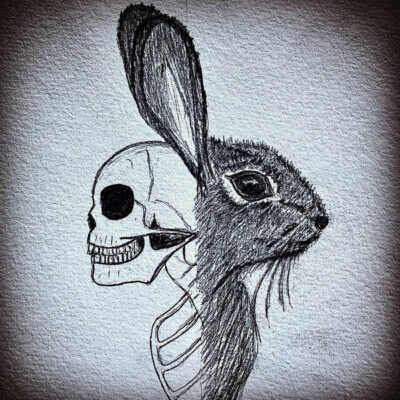In the 1930s and 40s, Universal Studios produced a series of horror films which remain some of the best and most popular examples of the genre. Tod Browning’s Dracula and James Whale’s Frankenstein became the iconic depictions of those characters in the popular imagination, from Dracula’s Hungarian accent, widow’s peak haircut, and cape to the neck-bolts, squared forehead, and lumbering gait of Frankenstein (who assumed his creator’s name in the popular consciousness due to the success of the film). All remakes, adaptations, and re-imaginings of those stories today are inevitably compared to Universal’s definitive and indelible masterpieces.
Emboldened by these successes, Universal produced dozens more horror films over the next 25 years, including The Mummy, The Black Cat, The Island of Lost Souls, and The Creature from the Black Lagoon, along with sequels to all of its successful properties. Characters began crossing over into stories in each others’ increasingly comedic and ridiculous films, culminating in the infamous Abbott and Costello Meet… series of the 1950s. Those parodies earned Universal’s monsters a poor reputation in later decades, and while some of the studio’s horror films are indeed dull or awful—it’s tough to maintain quality control at such a high rate of production—Universal’s highlights include some of the most unsettling and atmospheric horror films—and some of the most sublimely ridiculous comedies—ever produced (1939’s excellent Son of Frankenstein impressively manages both).
On Wednesday, October 30th, the Library of Congress will screen two of Universal’s classic horror films in Culpeper. For several years the library has been offering free weekly screenings at their Packard Campus Theater, a beautiful movie house which shows newly restored, pristine 35mm prints from the U.S. Government’s ever-growing collection. The theater offers creative programming, informative introductions and short programs, and some of the best-looking film prints available.
In recent months, the LOC has begun curating auxiliary screenings at the nearby State Theatre in downtown Culpeper. The films are shown via digital projection rather than 35mm film, and the theater, with an admission charge, provides an opportunity to watch classic films in a newly-restored 500-seat art deco movie house, originally constructed in the 1930s.
On Wednesday, October 30th, the State Theatre is screening a double-bill of The Invisible Man and The Wolf Man. The Invisible Man was directed by James Whale, who’d had success with the original Frankenstein, and had not yet made The Bride of Frankenstein. Incidentally, Whale, his life, and his films are the subject of the award-winning 1998 biopic Gods and Monsters. While Invisible Man lacks the expressionist lighting and lush sets that characterized the Frankenstein films, it’s still a well-crafted and highly enjoyable thriller.
Based on the 19th century novel by H.G. Wells (who lived long enough to see the film, and hesitantly praised it), the plot concerns a scientist whose experiments transform him into an invisible psychotic killer. It stars Claude Rains, who is best remembered as Captain Renault from Casablanca. Rains was making his American film debut (replacing the producer’s first choice, Boris Karloff), and though he spends much of the film wrapped in bandages (often utilizing a double; Rains was claustrophobic), his genteel accent and sinister tone are incredibly effective as the title character’s seemingly disembodied voice. The film was a huge success, in part because of its groundbreaking special effects, which pioneered a primitive version of the “blue screen” process used in later decades (or the “green screen” used in contemporary CGI films).
The Wolf Man (1941) is one of the few Universal films based on an original screenplay, rather than a pre-existing novel or stage play. While it drew on centuries of myths and superstitions, it also helped to establish and popularize the werewolf concept used in contemporary films and fiction. It was actually Universal’s second attempt at the werewolf idea, after the unsuccessful Werewolves of London, remembered today only because its title inspired a Warren Zevon song and a John Landis film.
The Wolf Man stars Lon Chaney, Jr., and though it made him a star, it’s also true that he quite clearly lacks the skill and genius of his famous father, the “Man of a Thousand Faces” who had starred in Universal’s very first horror films, as The Hunchback of Notre Dame and The Phantom of the Opera in the silent era. As an actor, the younger Chaney was dopey and dull, lacking in subtlety or grace, but his loutish football player physique served him well when covered in wolf makeup.
The visual effects are comparatively unimpressive when held up against Invisible Man, or later werewolf films—Chaney, Jr.’s “transformation” is depicted via the use of a fade. The film does have a strong supporting cast, including Rains again, and Dracula’s Béla Lugosi as the traveling gypsy who bites Chaney and gives him the werewolf curse.
Tell us about your favorite classic horror film in the comments section below.





